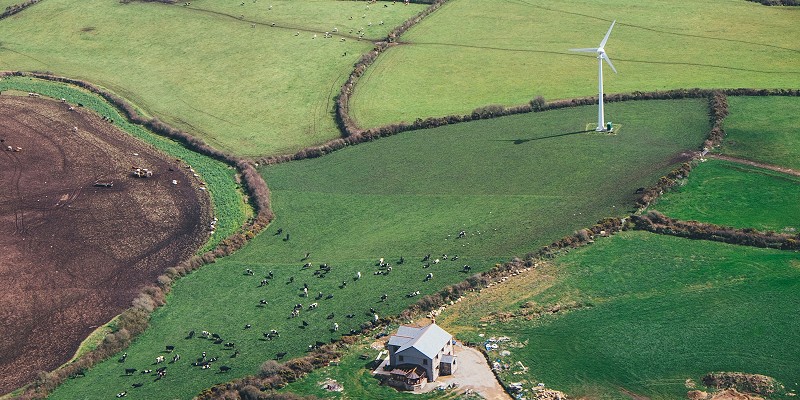Micro-CHPs: The benefits to your business

When we hear the word 'micro', we immediately think 'small' in relation to an object's physical size. However, in the case of a CHP (combined heat and power), it refers to the kW output of the technology. The Northern Ireland Renewables Obligation (NIRO) defines generating stations with a capacity of 50kW or less as 'micro-NIRO’ stations.
What is a micro-CHP?
A micro-CHP is a technology that generates both heat and electricity simultaneously, by combusting either a fossil fuel or a renewable fuel. The main benefit of this technology is that it can harness more energy from the desired fuel to generate electricity. As a result, it makes the combustion process more energy efficient.

Diagram showing how micro-CHP has replaced the conventional boiler, providing heat and hot water, in addition to electricity. Source: http://www.greenspec.co.uk/building-design/micro-chp/
The electricity generated can be used for many different purposes, subject to the needs of the generator, individual or company. Many installations in Northern Ireland are very much rural-based commercial operations and provide import power to small farming equipment, such as sheds and milking parlours, and provide support to carry out daily farming tasks.
Micro-CHPs can utilise a grid connection from the DNO (District Network Operator) such as NIE Networks in Northern Ireland. In this case, the maximum power of the micro-CHP unit can offset the load associated with farming processes, and the excess generation not required will be exported to the grid.
How does it work?
There are typically three key components to CHP technologies; the 'Prime Mover' which creates the mechanical power, the ‘Electric Generator’ and the ‘Heat Recovery Unit’.
Micro-CHP technology has been used in the industrial sector since the 1960’s, and through technological development, has been adapted for domestic heat and power needs. Micro-CHP can use both fossil fuels such as mains gas or LPG (Liquefied Petroleum Gas) and, as the technology has developed, renewable fuels such as biogas - a product of anaerobic digestion. Anaerobic digestion is an effective means of renewable generation as it generates energy from waste, which would alternatively be sent to landfill.
There are several installations in Northern Ireland alone, as it is largely utilised to provide power to small farms around the country. Due to the large investment for this technology, it has been supported (up until March 2017) by Renewables Obligation Certificates (ROCs). Therefore, due to lack of government support, and running costs, such as maintenance and producing gas, the technology may not be as attractive as it was previously.
The Northern Ireland Renewables Obligation (NIRO) scheme officially closed on 31st March 2017 to new applicants. Since this date, there has not been any further policy implementation to incentivise the installation of renewable technologies. If investors do not have the support of an economic incentive such as ROCs, then this is a key deterrent.
Why should you consider installing this technology?
There are various benefits to installing this technology in a commercial setting such as:
- Heat generation as a by-product of the electricity - when the micro-CHP is generating electricity, the unit will also generate heat for district heating purposes.
- Carbon savings - by generating electricity on-site, you can reduce your electricity consumption and therefore CO2 emissions, compared with using grid electricity and a standard heating boiler.
- Relatively straightforward installation.
- Reduces pressure on industrial power generation and positively impacts our energy security.
Where to find out more
Information on CHP suppliers and installers is available on the Association for Decentralised Energy website or local renewable energy installers may also be able to advise on the suitability of CHP systems for your business. The approximate costs involved in a CHP installation of 44kW – 50kW in size would be in the region of £250,000 to £350,000.
A typical domestic sized CHP system would be significantly lower in cost at around £8000 - £9000.
CHP feasibility for your business
If you are interested in finding out more on the micro-CHP technology, contact our Energy Solutions team today.



